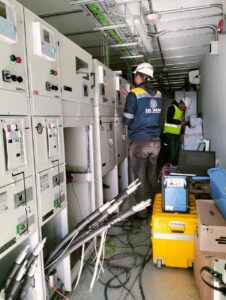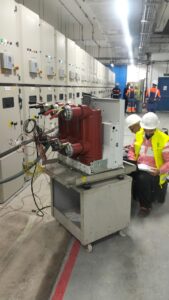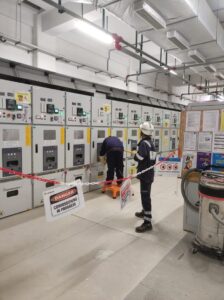Climate change will impact every type of natural resource. The distributions of plant and animal species will continue to change as rising temperatures alter ecosystems and amplify existing environmental concerns.

Forests and Vegetation
Risks:
The impacts of climate change on forests will vary widely based on the species involved and other factors. With increasing CO2, forest productivity will likely increase until other impacts of climate change, such as increased risks of drought,

pests, and invasive species present additional stressors to forests. As temperatures rise, the distribution and composition of tree species will continue to shift northward. In practical terms, this translates into a transition from maple and birch as the preferred tree species to oak and hickory by 2100.
Some species, such as red pine, may completely retreat from the Great Lakes region by the end of the century.
Strategies:
Forest management in the region will need to adapt as the potential impacts become clearer. Planting species that will provide critical habitat for wildlife while remaining resistant to increased risks from pests is one potential option.

In many cases, the facilitation of new species into the region may be more ecologically sound than the preservation of existing traditional species.

Fish and Wildlife
Many of the planet’s most diverse and ecologically important areas—including the Arctic and Virunga National Park in the Congo Basin—also happen to hold large underground deposits of oil and gas. Extracting these oil and gas deposits can

result in lasting damage to the environment. Specifically, oil and gas exploration and development causes disruption of migratory pathways, degradation of important animal habitats, and oil spills—which can be devastating to the animals and humans who depend on these ecosystems.
Risks:
As habitat zones shift northward with temperature, many animal species may also need to migrate north as well. The Great Lakes will be a barrier for migration to many species, and will be a critical obstacle for those unable to adapt. Wildlife that relies on wetlands may be at greatest risk, as increased evaporation rates may reduce total wetland coverage, and further stress those species.

Fish populations throughout the Great Lakes region may become less diverse. Warmer water temperatures will likely lead to a decline in cold water fish populations as warm water fish populations become more abundant. The overall productivity in lakes and waterways may be reduced by lake stratification and increased frequency of hypoxic conditions.
Strategies:
As species distributions change, the conservation of wildlife will require similar shifts in protected natural areas, and accommodations in land use and development may be necessary. As with changing vegetation, the facilitation of new, ecologically beneficial species into the region is an option.
Rivers and Wetlands
Risks:

Lower summer water levels are likely to limit groundwater recharge, cause small streams to dry up, and lead to a reduction in wetlands, resulting in poorer water quality and less habitat for wildlife. More frequent and intense precipitation events due to climate change may amplify existing land use impacts. Impervious surfaces impair the natural flood-absorbing capacities of wetlands and floodplains, thereby increasing the risk of flooding and erosion. As severe storms increase in number and strength, watersheds and other ecosystems adjacent to agricultural and urban environments will be particularly vulnerable to damage and contaminated runoff.
Strategies:
Urban environments may need to allocate more “green” space and use more permeable pavement to alleviate increased flooding and erosion risks from more severe precipitation events. Appropriate land use practices, such as increasing development density and the expansion of protected areas along waterways, will likely be necessary to alleviate increased risks of erosion, and preserve increasingly critical wildlife habitat. For a comprehensive list of
REFERENCES
https://www.worldwildlife.org/threats/oil-and-gas-development
https://www.petrofac.com/en-gb/sustainability/sustainable-development/
https://www.bp.com/en/global/corporate/energy-economics/statistical-review-of-world-energy/oil.html
https://www.nmtv.tv/global-warming-increases-the-risk-of-river-flooding-over-the-coming-decades/
https://www.petrofac.com/media/5088/petrofac-2019-annual-report.pdf





